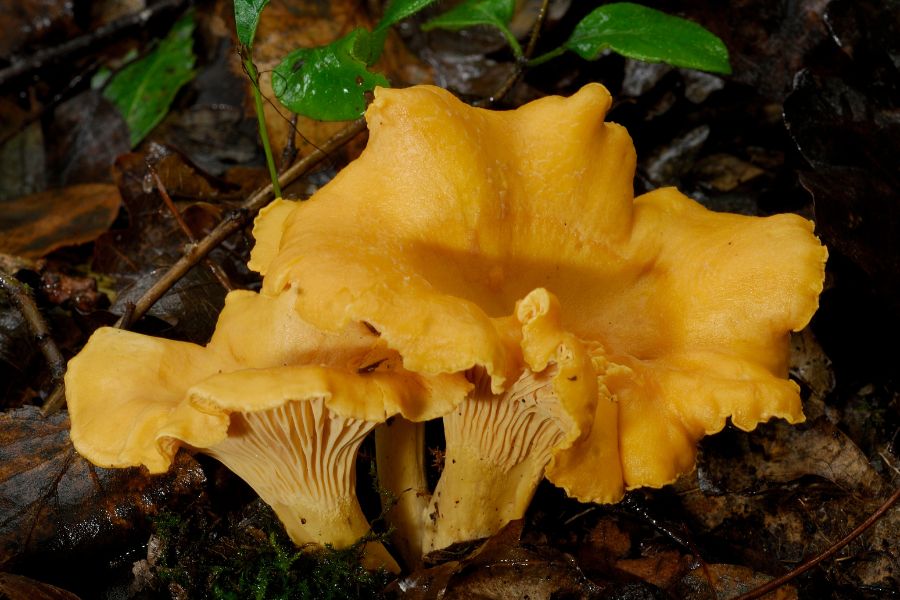Hunting for chanterelle mushrooms in Florida means scanning the forest floor for flashes of golden-orange among leaf litter and moss. These mushrooms love warmth and humidity, two things Florida has plenty of during the summer months.
They’re also one of the oldest-known wild foods people have foraged, with a history stretching back thousands of years. Today, they’re still showing up in quiet corners of the Florida landscape, hidden beneath leaf litter and hardwoods.
Their flavor gets most of the attention, but chanterelles also carry a boost of vitamin D when they’ve had some sunlight. That extra nutritional benefit adds even more value to a good haul in the right conditions.
Not every forest in Florida will give up chanterelles easily, but the ones that do can offer more than just one species. Knowing where to search can mean the difference between going home empty-handed or filling your basket with an impressive variety of edible mushrooms.
What We Cover In This Article:
- What Chanterelle Mushrooms Look Like
- Mushrooms That Look Like Chanterelles But Aren’t
- How to Find Chanterelles
- Where You Can Find Chanterelles
- Additional Locations to Find Chanterelles
- When You Can Find Chanterelles
- The extensive local experience and understanding of our team
- Input from multiple local foragers and foraging groups
- The accessibility of the various locations
- Safety and potential hazards when collecting
- Private and public locations
- A desire to include locations for both experienced foragers and those who are just starting out
Using these weights we think we’ve put together the best list out there for just about any forager to be successful!
A Quick Reminder
Before we get into the specifics about where and how to find these plants and mushrooms, we want to be clear that before ingesting any wild plant or mushroom, it should be identified with 100% certainty as edible by someone qualified and experienced in mushroom and plant identification, such as a professional mycologist or an expert forager. Misidentification can lead to serious illness or death.
All plants and mushrooms have the potential to cause severe adverse reactions in certain individuals, even death. If you are consuming wild foragables, it is crucial to cook them thoroughly and properly and only eat a small portion to test for personal tolerance. Some people may have allergies or sensitivities to specific mushrooms and plants, even if they are considered safe for others.
The information provided in this article is for general informational and educational purposes only. Foraging involves inherent risks.
What Chanterelle Mushrooms Look Like
Chanterelles are among the most popular wild edible mushrooms in North America. Here are some of the main types of chanterelles found across different regions of the country:
Golden Chanterelle (Cantharellus cibarius group)
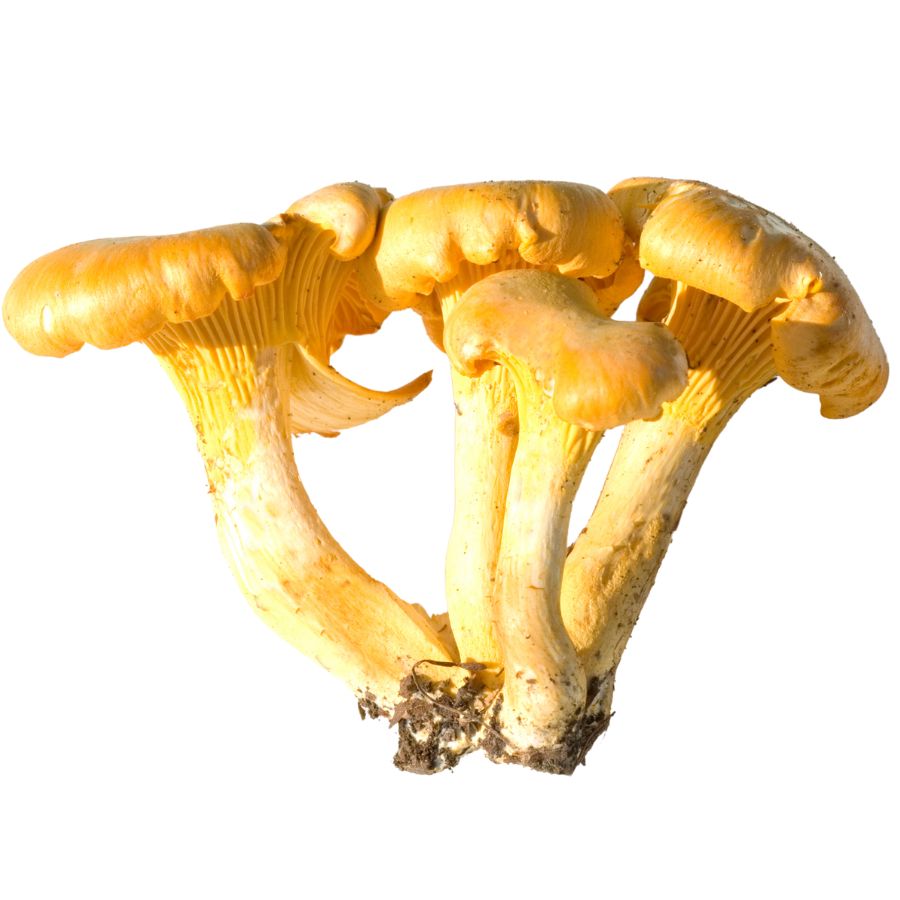
Golden chanterelles are one of the most recognizable wild mushrooms, with bright yellow to deep orange caps shaped like trumpets. They have thick, wavy edges and shallow ridges underneath instead of true gills.
These mushrooms are known for their fruity, apricot-like scent and a rich, nutty flavor when cooked. They grow in hardwood forests across the eastern, central, and southern United States, often near oaks, beech, or birch trees in late summer through fall.
Pacific Golden Chanterelle (Cantharellus formosus)
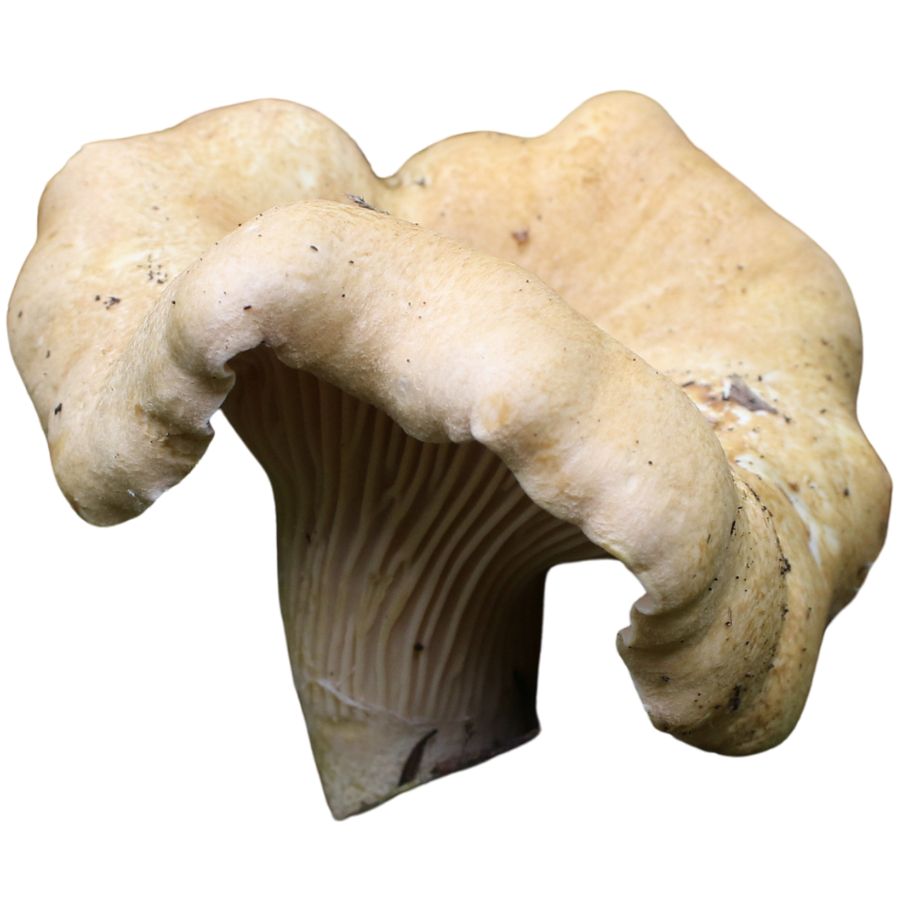
The Pacific golden chanterelle has a bright orange cap with a flared, uneven shape and shallow, blunt ridges underneath. Its sturdy stem is usually pale to light yellow, and the whole mushroom has a smooth, velvety feel.
It has a mild, nutty taste with a hint of fruitiness when cooked. These mushrooms are mostly found in the damp forests of Oregon, Washington, and northern California, often growing under Douglas fir and other conifers in fall and early winter.
White Chanterelle (Cantharellus subalbidus)
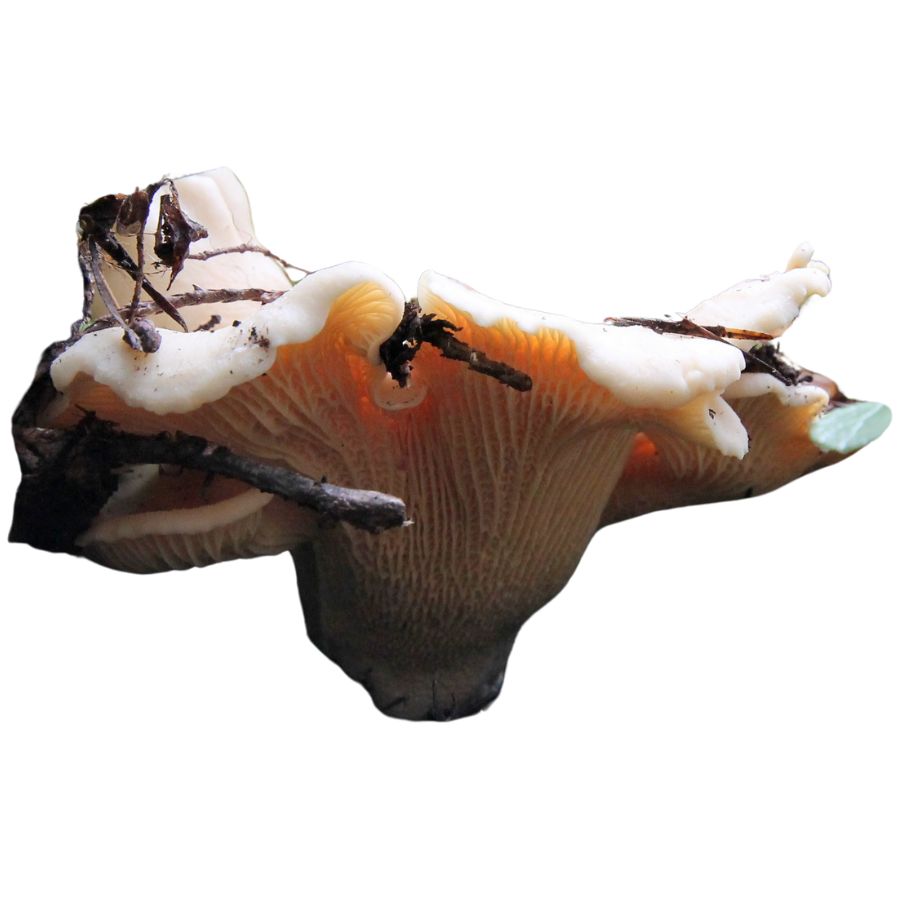
White chanterelles are large, heavy mushrooms with a smooth, off-white cap that can look almost golden after rain. The stem is thick and solid, and the surface may feel slightly waxy when fresh.
They have a subtle earthy taste with a gentle, fruity smell that gets stronger in the pan. These mushrooms grow in moist conifer forests along the West Coast, especially in Oregon and northern California, often hiding under thick layers of fir needles.
Smooth Chanterelle (Cantharellus lateritius)
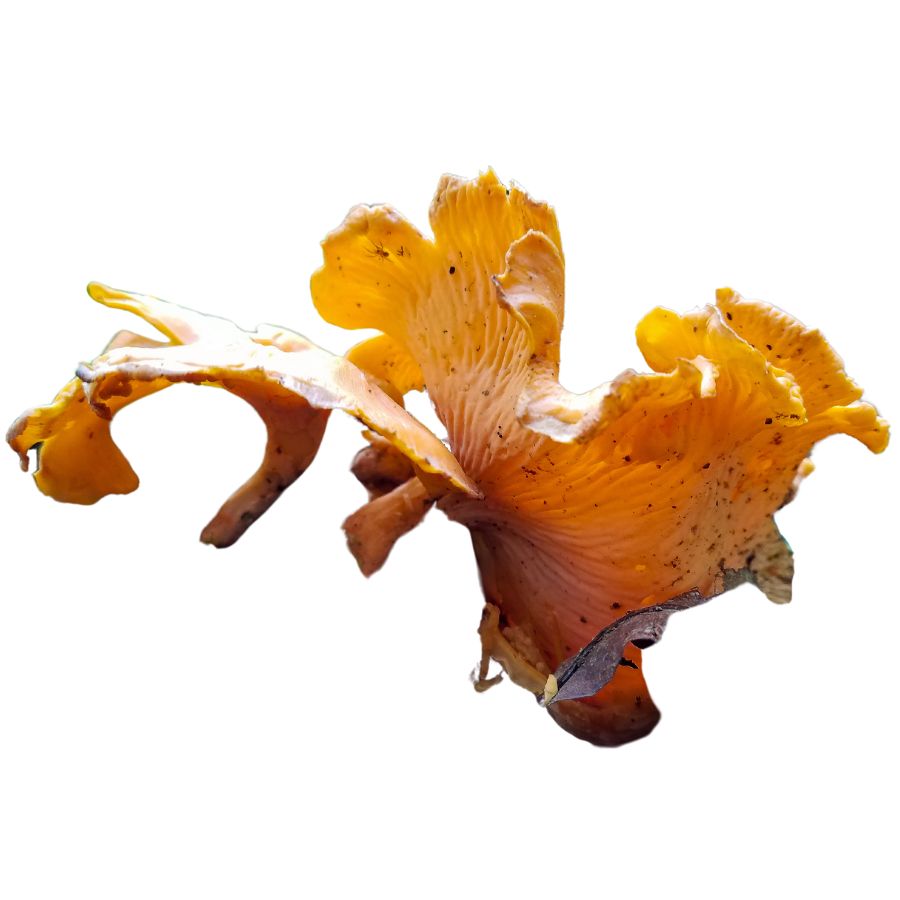
The smooth chanterelle has a soft orange to pale yellow cap with an almost completely smooth underside instead of well-defined ridges. Its cap often blends right into the stem, giving it a rounded, seamless appearance.
It has a mild, slightly peppery flavor and a firm texture when cooked. This mushroom is common in the eastern and southeastern United States, especially in hardwood forests with oak and beech during warm summer months.
Red Chanterelle (Cantharellus cinnabarinus)
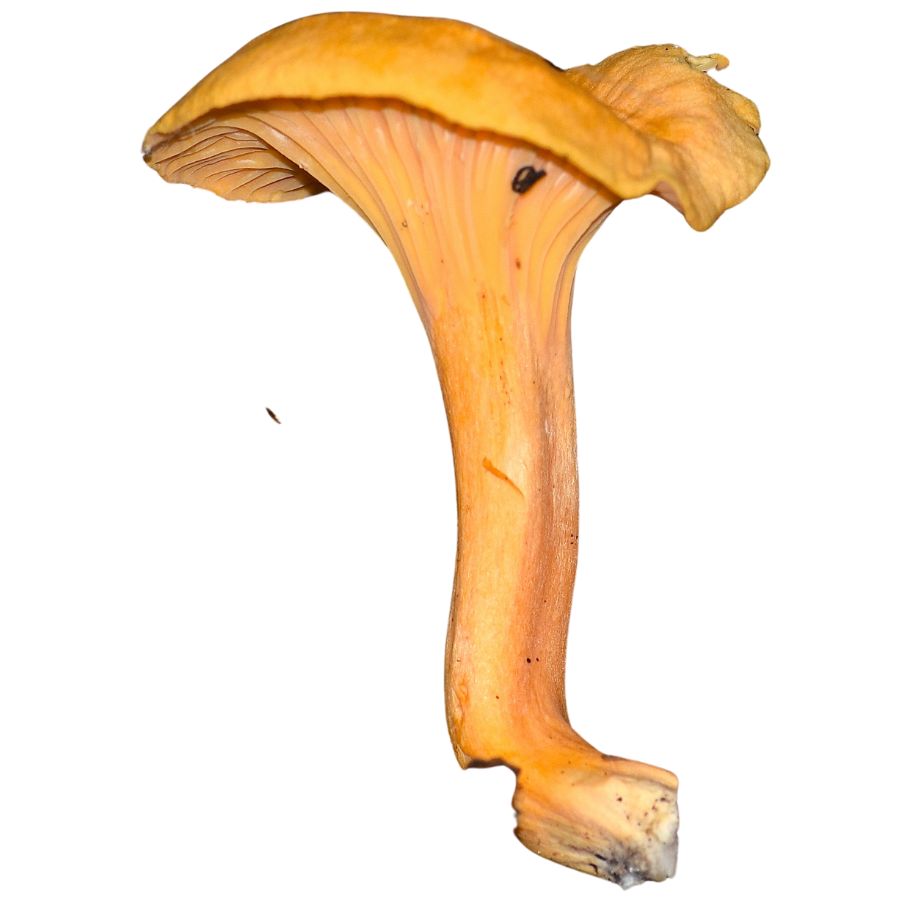
Red chanterelles are easy to spot thanks to their vivid coral to crimson coloring and compact size. They have a smooth, wavy cap with soft ridges that flow down a short, sturdy stem.
Their taste is delicate and slightly sweet, with a faint fruity smell when fresh. These mushrooms grow in leaf litter across eastern and southeastern forests, often appearing in large groups during warm, wet periods in summer.
Mushrooms That Look Like Chanterelles But Aren’t
Chanterelles have several lookalikes that can confuse even experienced foragers. This is why learning to recognize easy-to-identify wild mushrooms is one of the most important skills for any mushroom hunter. Below are a few mushrooms often mistaken for chanterelles, with details on how to tell them apart.
False Chanterelle (Hygrophoropsis aurantiaca)
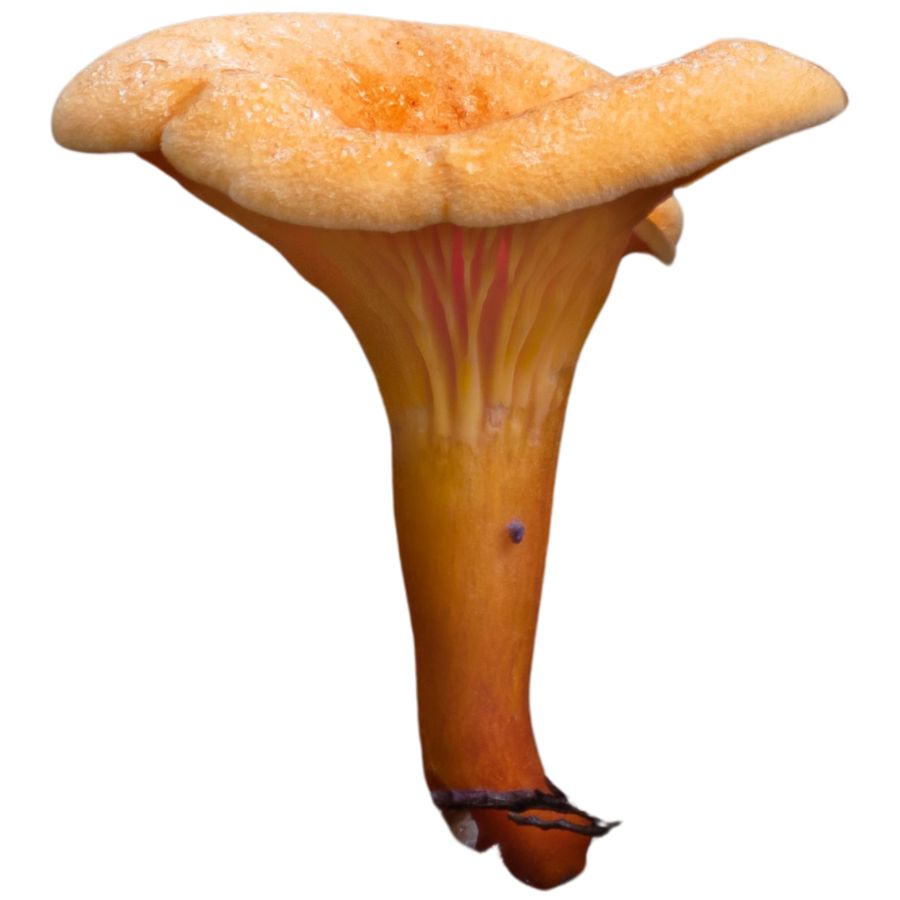
The false chanterelle has a bright orange to orange-brown cap with a fuzzy surface and rolled-in edges. Its gills are thin, crowded, and more regular than true chanterelles.
This mushroom shows up in many parts of the U.S., especially in conifer forests of the Pacific Northwest, the Northeast, and the Southeast. It prefers mossy or needle-covered forest floors and often grows on decaying wood.
While not dangerously toxic, it can cause stomach upset and isn’t considered a good edible. Its bitter taste and texture make it unappealing.
Jack-o’-Lantern Mushroom (Omphalotus illudens, Omphalotus olearius, Omphalotus subilludens)
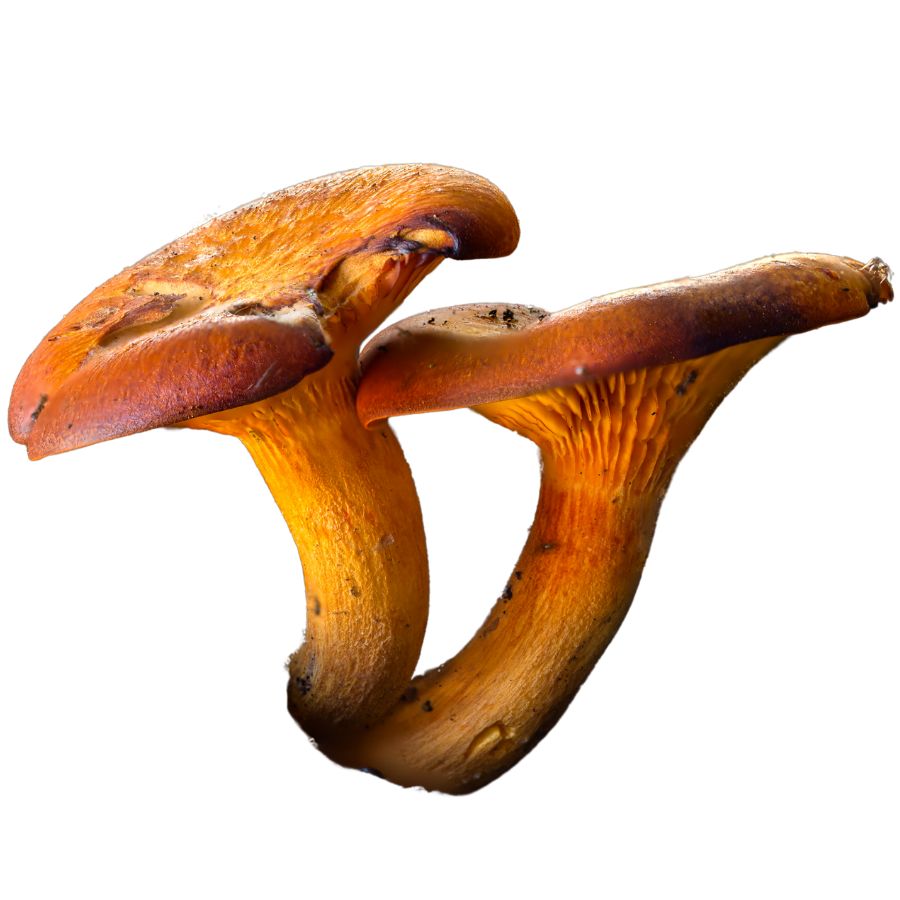
These mushrooms are often bright orange, grow in clusters, and have true gills that run down the stem. They are best known for their eerie greenish glow at night due to bioluminescence.
Jack-o’-lantern mushrooms are found in hardwood forests throughout the eastern U.S., the Midwest, the Gulf Coast, and parts of California. They typically grow on decaying stumps or buried wood.
All three species are poisonous and can cause severe vomiting, cramps, and diarrhea. They should never be eaten under any circumstances.
Scaly Vase Chanterelle (Turbinellus floccosus)
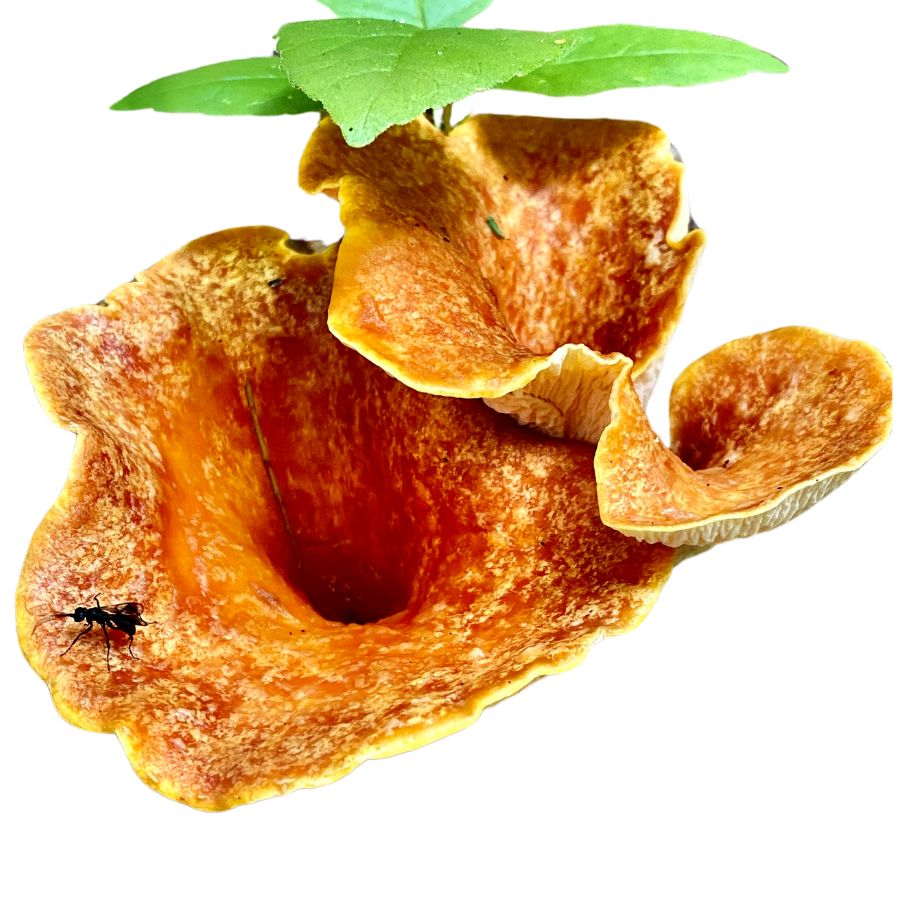
This mushroom has a thick, vase-like shape with a scaly orange to brownish cap and ridged, wrinkled undersides. Unlike chanterelles, it has a tough texture and a strong, unpleasant odor when mature.
It’s widespread in western states like California, Oregon, and Washington, especially in conifer-heavy mountain forests. Scaly vase chanterelles often grow near pines or firs and appear in summer through fall.
While not deadly, they can cause nausea and gastrointestinal issues and are not considered edible. Their coarse texture and poor flavor also make them undesirable.
Orange Mock Chanterelle (Gomphus clavatus, sometimes called Pig’s Ears)
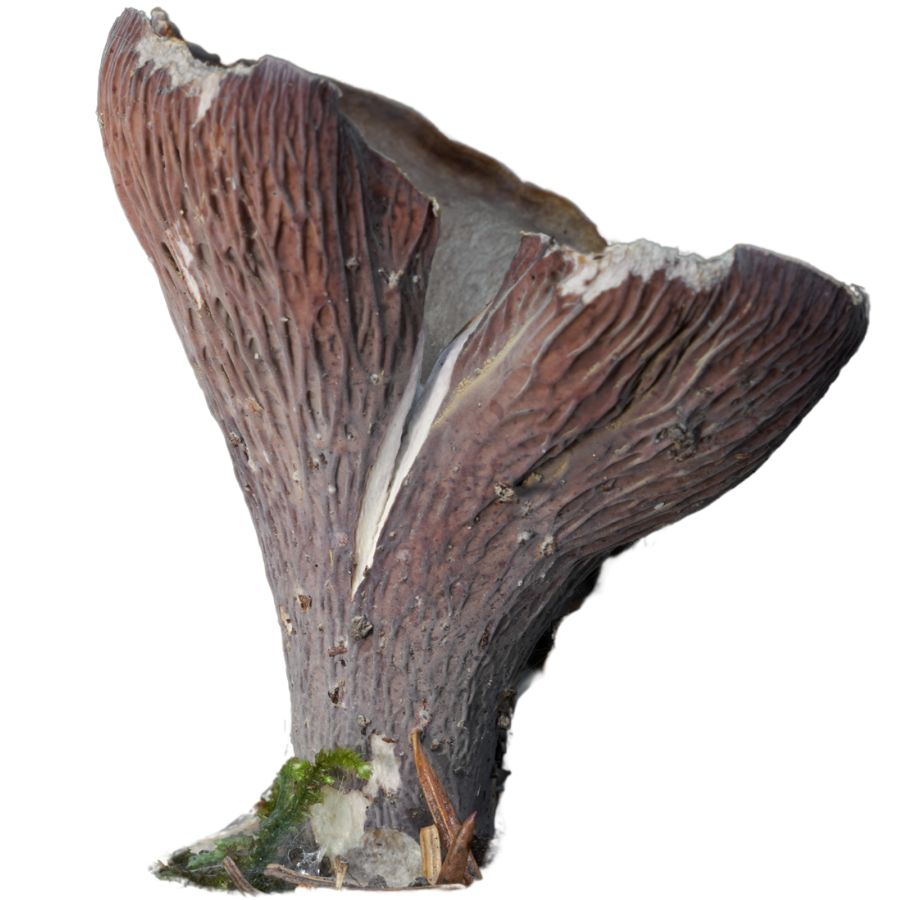
Despite its nickname, this mushroom is shaped more like a funnel or ear than a true chanterelle. Its surface is wrinkled rather than gilled, and the color ranges from lavender-gray to dull orange-brown.
Orange mock chanterelles are mostly found in higher elevations of the Pacific Northwest and parts of the Rocky Mountains. They grow in coniferous forests, often appearing after rainfall.
Some people report eating them without issues, but others experience stomach upset. The flavor is mild but not especially enjoyable.
Chanterelle Waxy Cap (Hygrocybe cantharellus)
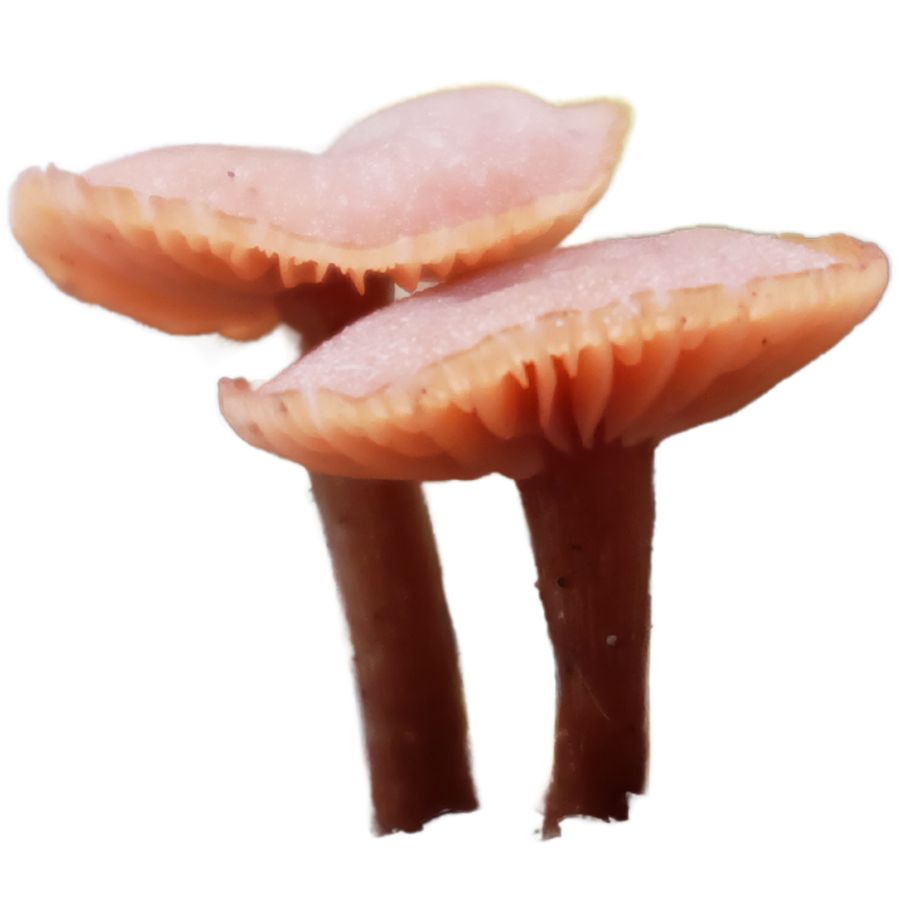
This waxy cap species is small, orange to yellow, and often found in grassy fields or forest edges. It has widely spaced gills and a shiny, moist surface that can be confused with young chanterelles.
It’s more common in the eastern U.S., especially in the Southeast and Midwest during the warmer months. Unlike chanterelles, it thrives in open lawns, meadows, and disturbed soil.
While it is not toxic, it’s considered inedible due to its soft, watery texture and lack of flavor. Its fragile structure breaks down quickly after picking.
How to Find Chanterelles
Chanterelles don’t just grow anywhere. These mushrooms are tied to very specific forests, trees, and soil conditions. Once you learn how to read the land, you’ll start spotting the signs that indicate that chanterelles are likely nearby.
Before you head out, make sure you’re equipped with the right tools by checking out the ultimate forager’s toolkit.
Look Under Mature Hardwood Trees
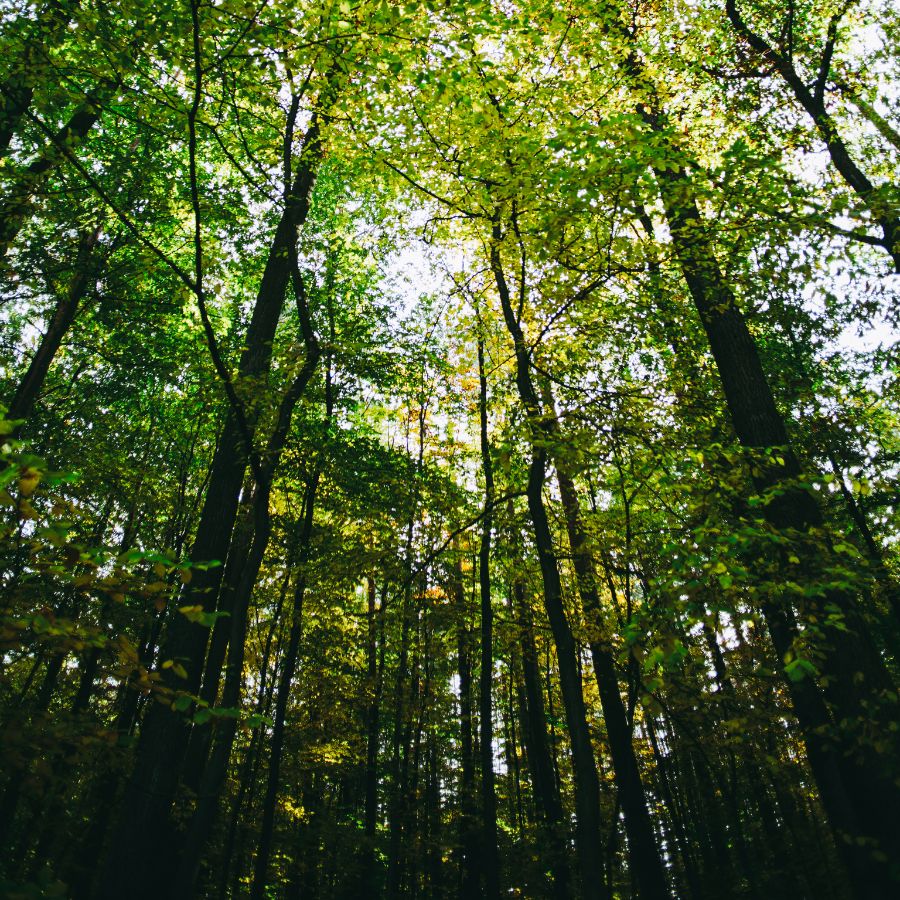
Chanterelles grow in the ground beneath living trees, especially older hardwoods. In the eastern US, they are most often found under white oak, red oak, and American beech. These trees provide the stable root systems chanterelles need to form their underground mycorrhizal networks.
The best forests are ones that haven’t been logged or heavily disturbed for decades. Look for areas with a mostly closed canopy, scattered light, and a soft carpet of fallen leaves from previous seasons. Avoid young mixed forests with patchy cover or aggressive undergrowth.
Seek Out Mossy Forests with Douglas Fir and Hemlock
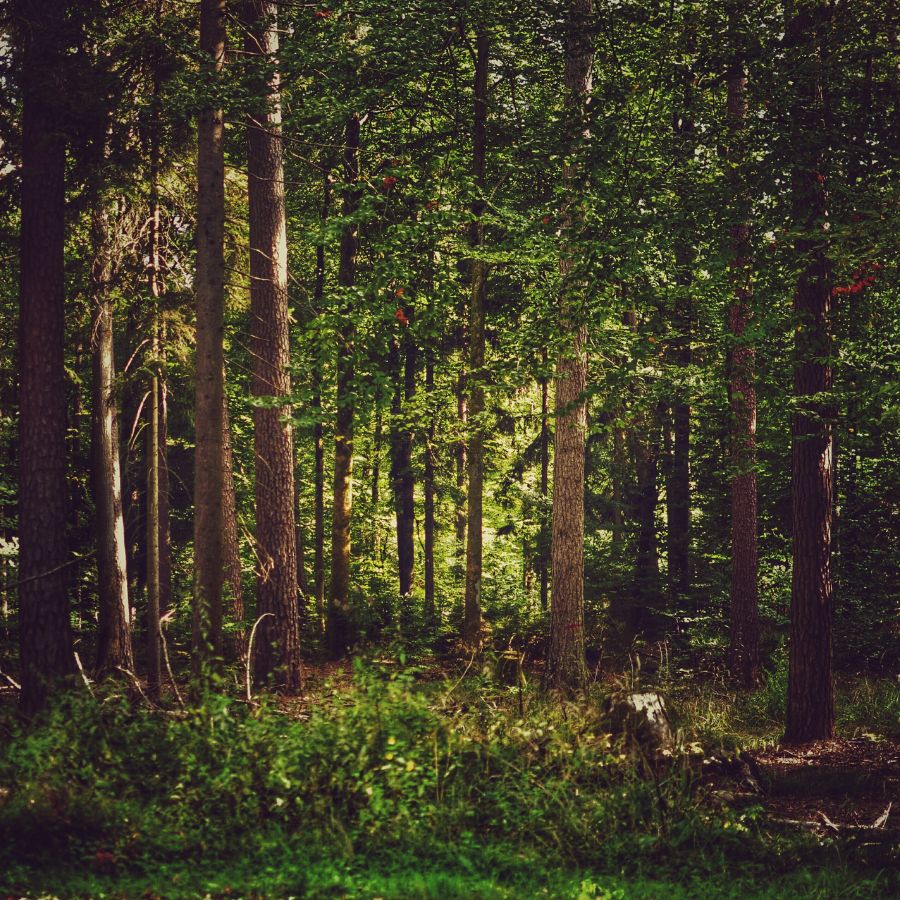
In certain places in the country, chanterelles grow in conifer forests dominated by Douglas fir, Sitka spruce, and western hemlock. They favor dense stands of older trees where the ground is covered with needles, moss, and woody debris.
Look in upland areas that stay moist but not wet, especially slopes or forest benches. Avoid low flood-prone areas or ridges that dry out quickly. The most productive patches are often in stands where tree age is consistent and the understory is sparse.
If you’re foraging in suburban greenbelts or wooded edges near neighborhoods, these tips on suburban foraging may help you find promising patches close to home.
Look on Slopes with Soft Soil and Good Leaf Litter
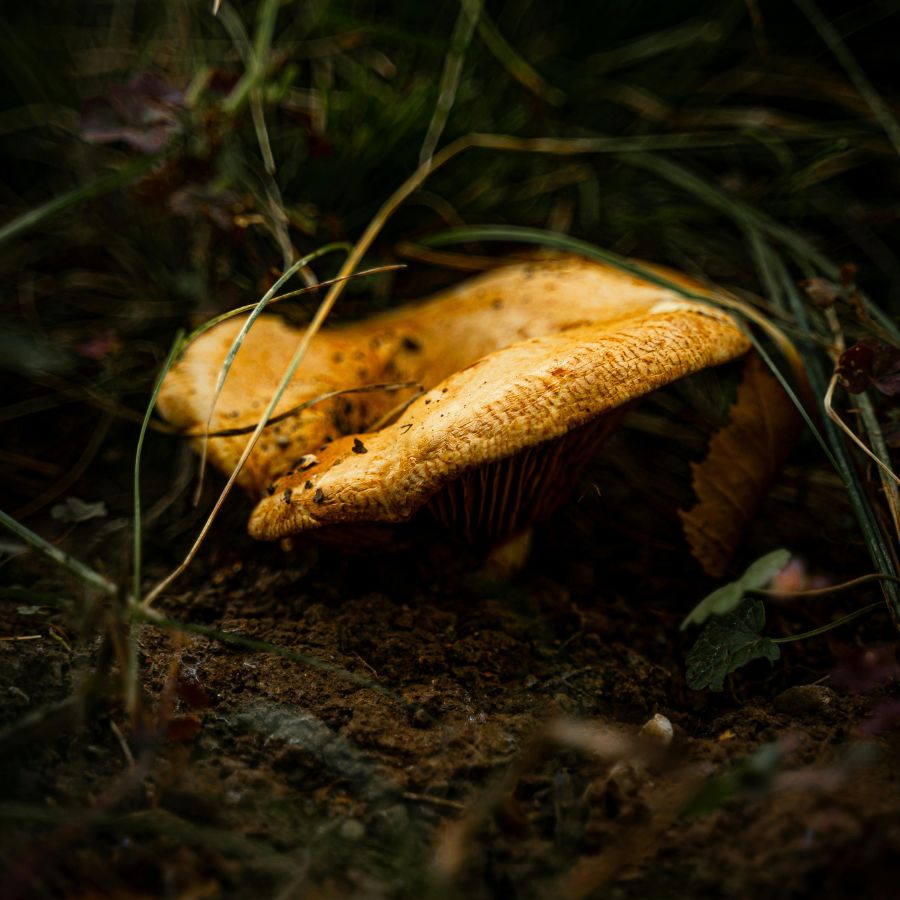
Chanterelles grow in loose, aerated soil that stays moist for days after rainfall but doesn’t turn soggy or compact. The best soil is loamy or sandy loam, with a soft texture and good leaf litter coverage.
You’ll often find them on sloped terrain where water moves through slowly without pooling. Check the uphill edges of stream drainages, old animal trails, or natural shelves on the side of a ridge. Rocky or clay-heavy soil usually means fewer or no chanterelles.
Focus on Cool, Shady Areas with Dense Tree Cover
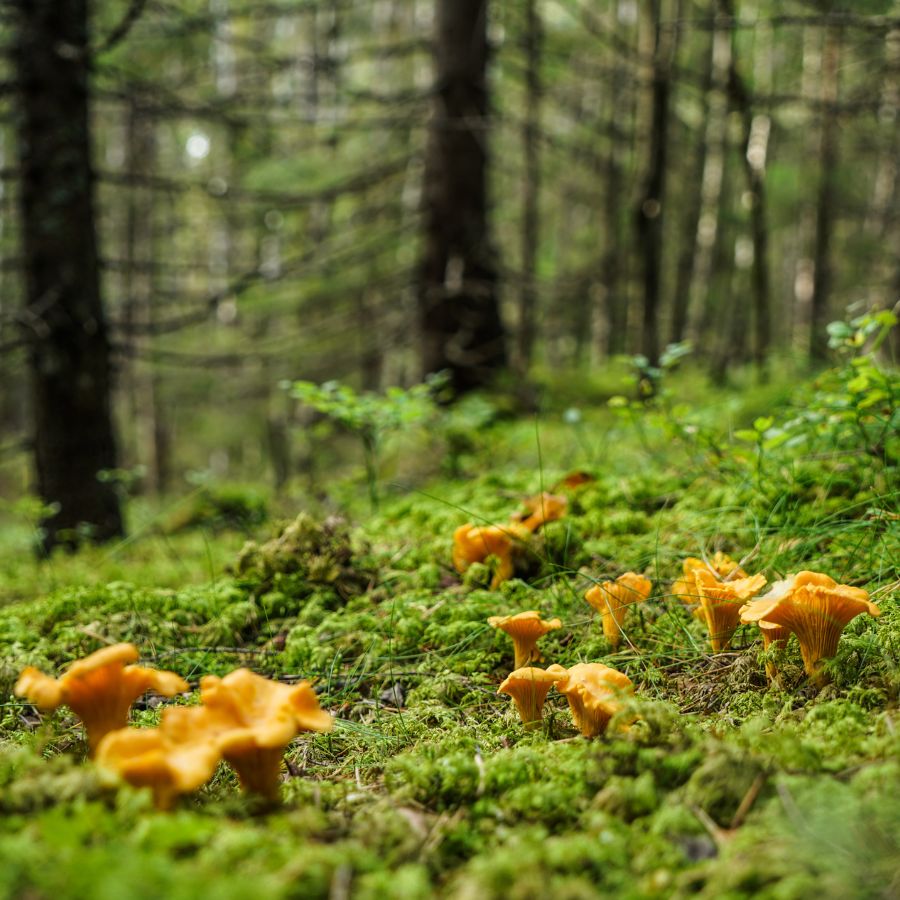
These mushrooms thrive in shaded woods that stay cool and damp even during warm weather. Ideal spots are under thick canopy cover with limited sunlight hitting the ground during midday.
Moss, ferns, and even scattered patches of clubmoss or Indian cucumber root can be good indicators. If the air feels noticeably cooler and more humid than other parts of the forest, slow down and look closer. Avoid sunny openings, grass-covered clearings, or areas with dense shrubs.
You might also find other simple foods to forage in spring when you’re scouting for early signs of chanterelles.
Search Two to Three Days After a Soaking Rain

Chanterelles fruit after sustained rainfall followed by warm, humid nights. A steady soaking rain rather than short bursts or drizzle is what triggers them to push up through the soil.
Once the ground has been wet for two to three days, and nighttime lows stay above 55 degrees, check likely patches within 48 to 72 hours. Foggy mornings, overcast skies, and mild daytime temperatures in the 60s or 70s are all promising signs. Avoid hot, dry stretches or cold snaps that stall growth.
Keeping track of local conditions and having a system to harvest wild foods effectively makes a big difference during short fruiting windows.
Check Older Forests with Soft, Moist Organic Cover
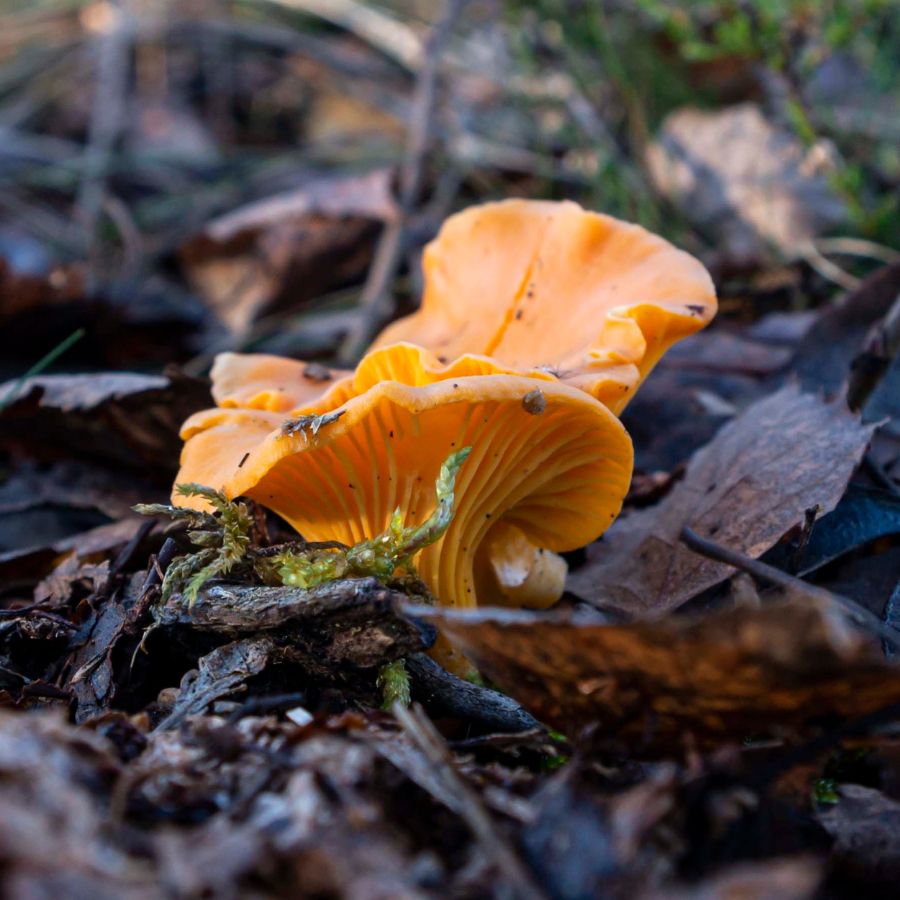
Chanterelles prefer to grow in areas where the ground is covered with a soft, undisturbed layer of leaf litter or conifer needles. This natural mulch helps maintain consistent soil moisture and creates a stable surface for fruiting.
Forests with years of built-up organic matter tend to be more productive than recently disturbed areas. Avoid spots where the ground is bare, compacted, or covered in grass and brambles, which can signal poor conditions for chanterelles.
Search for Moss Growing at the Base of Mature Trees
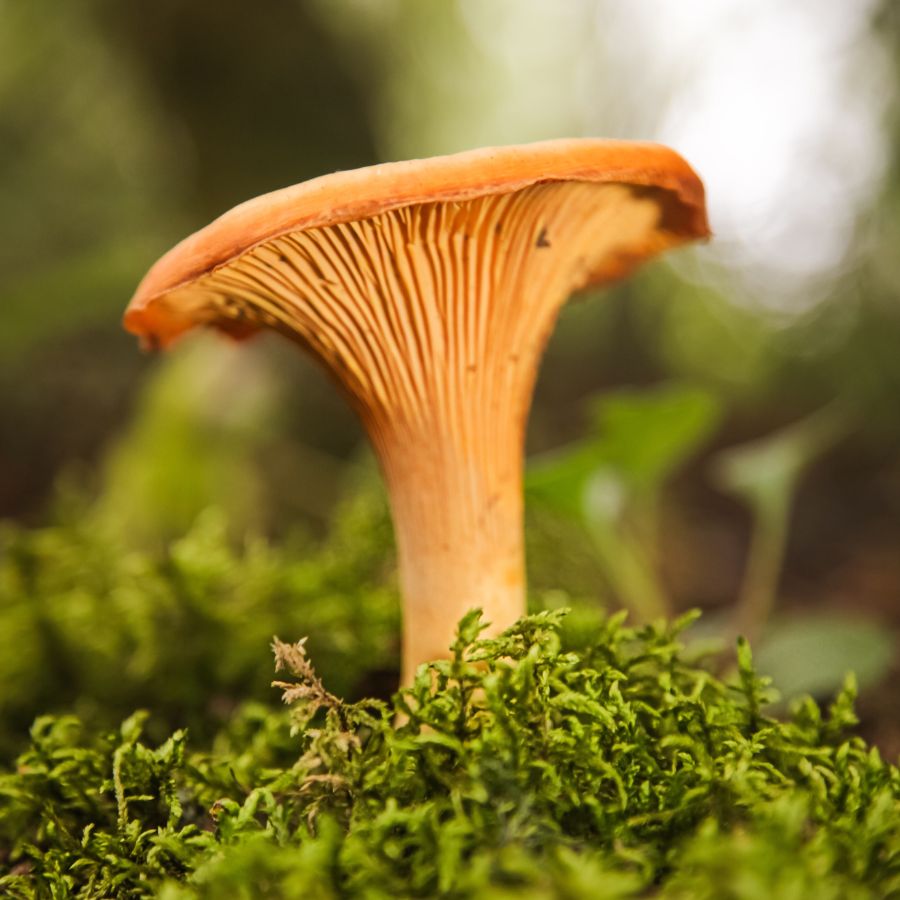
Patches of moss are often a good sign, especially when growing near the base of mature trees or across soft, sloping ground. Moss helps retain humidity and indicates soil that holds moisture without being soggy.
Look for green moss around shallow roots, exposed tree bases, or near decomposing wood that still has structure. These microhabitats suggest just the right balance of shade, moisture, and airflow that chanterelles prefer.
Scan the Area Carefully for Other Mycorrhizal Mushrooms
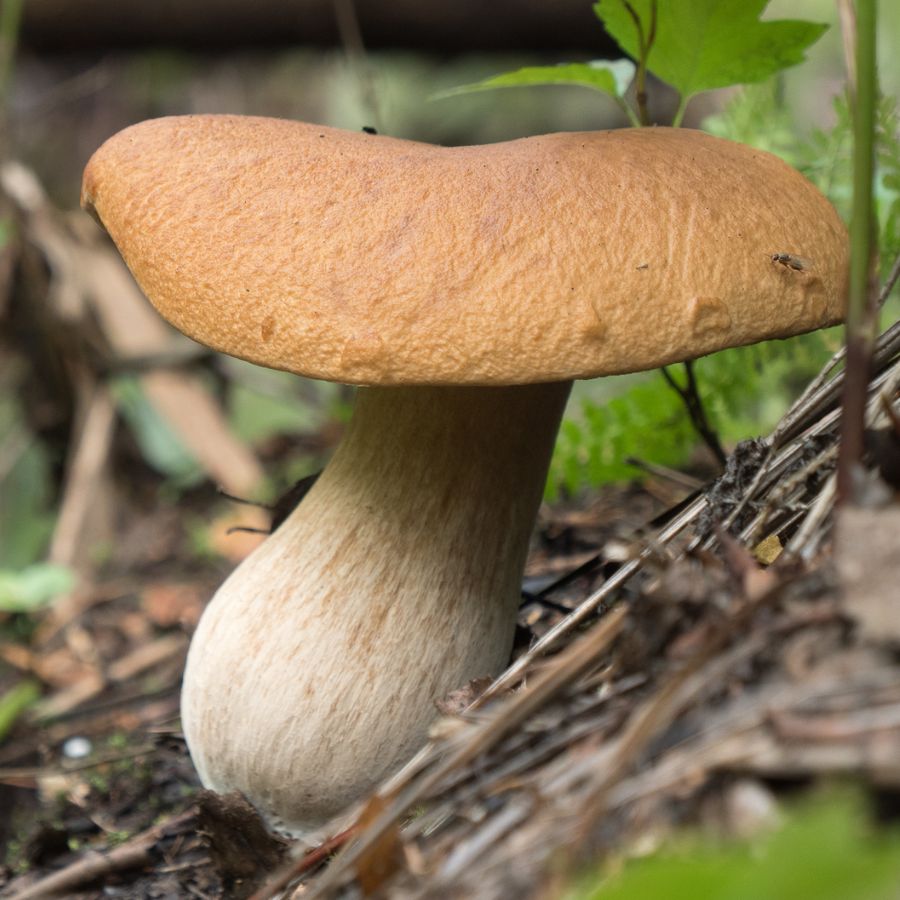
Seeing other mushrooms in the area can be an important clue that the ecosystem is supporting underground fungal networks. Species like russulas, amanitas, or boletes often fruit in the same conditions as chanterelles.
While they don’t always grow together, their presence means the soil and tree relationship is active and healthy. If you notice several types of mushrooms fruiting near hardwoods or conifers after rain, slow down and scan the area carefully.
Many of the same areas also produce easy-to-identify wild roots and tubers during the same season.
Before you head out
Before embarking on any foraging activities, it is essential to understand and follow local laws and guidelines. Always confirm that you have permission to access any land and obtain permission from landowners if you are foraging on private property. Trespassing or foraging without permission is illegal and disrespectful.
For public lands, familiarize yourself with the foraging regulations, as some areas may restrict or prohibit the collection of mushrooms or other wild foods. These regulations and laws are frequently changing so always verify them before heading out to hunt. What we have listed below may be out of date and inaccurate as a result.
Where You Can Find Chanterelles
These are some of the best locations in the state where chanterelles have turned up:
Ocala National Forest
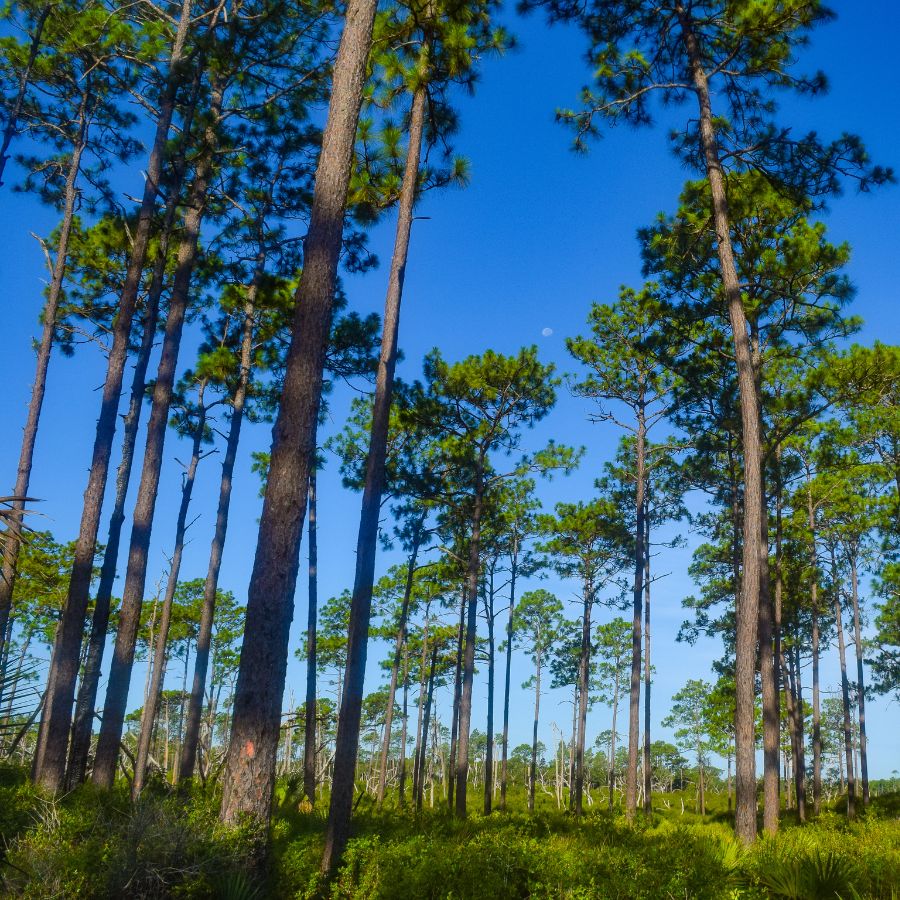
Ocala National Forest is home to more than 600 lakes and rivers, making it one of the wettest forested areas in the state. In wetter years, the shaded pine flatwoods around Lake Eaton often create the kind of damp, leafy ground where chanterelles thrive, especially in the areas just off Forest Road 65.
The Big Scrub region may be known for its rare sand pine ecosystem, but the forest edges near Hopkins Prairie are worth checking after summer rains. Along the Florida Trail heading south from the prairie, there are dense patches of hardwoods and palmettos with solid conditions for chanterelles.
Juniper Springs is one of the oldest recreation sites managed by the Forest Service, and its spring-fed creeks cut through mature hardwood groves. The shaded ravines near Fern Hammock Springs, especially along the unpaved trails branching west of the main spring run, are also worth exploring.
Farther north, along Mill Dam Lake, the forest shifts into mixed uplands with scattered pines and oaks. The winding trails off Highway 40, particularly near the intersecting creeks around Sellers Lake, have several spots where the soil stays damp and covered in natural debris.
Apalachicola National Forest
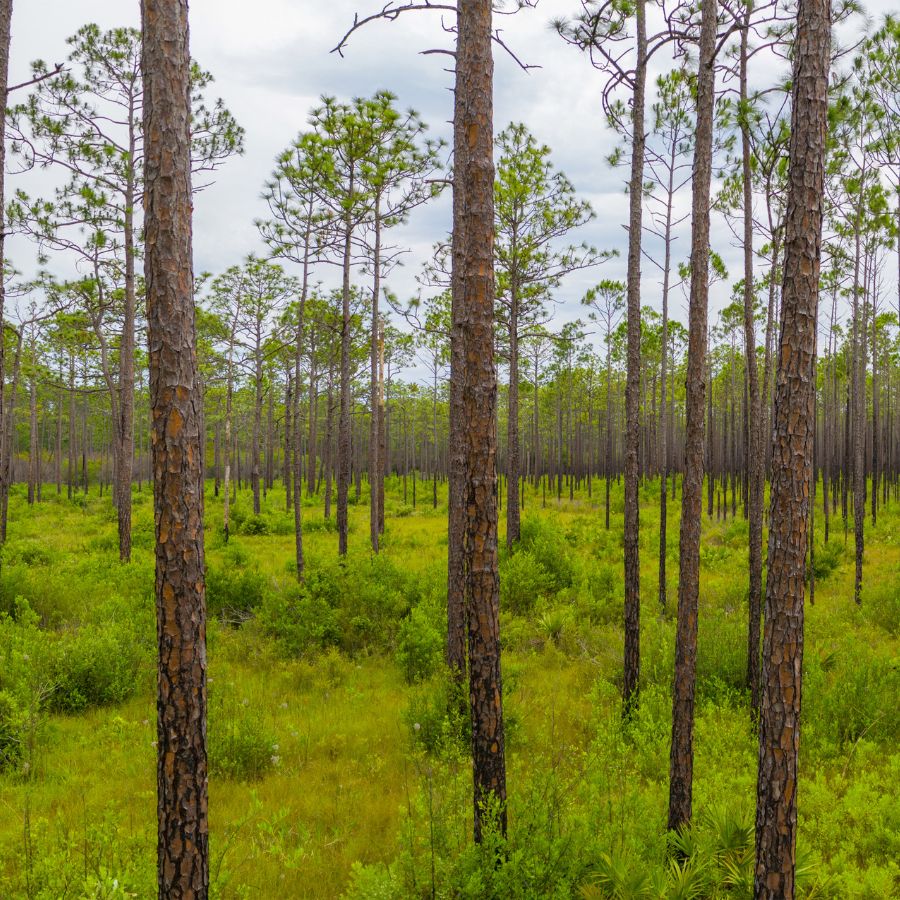
Apalachicola National Forest is the largest national forest in Florida, and it protects one of the most extensive longleaf pine ecosystems in the southeastern U.S. In the western portion of the forest, the areas surrounding Silver Lake and the nearby trail system hold promise for chanterelle mushrooms.
To the south, the Mud Swamp/New River Wilderness has dense, mature hardwood stands along the edges of its wetland corridors. Places near the banks of the New River, especially where floodplain oaks cluster, tend to offer the damp leaf litter and filtered sunlight that chanterelles favor.
The east side of the forest includes the Apalachee Savannahs Scenic Byway, which runs near stretches of forest thick with loblolly and slash pine. Just off Forest Road 123, where creeks like Porter Lake Branch meander through mixed woods, you’ll find the kind of shaded, nutrient-rich ground.
Farther north near Kennedy Creek, the terrain has a combination of moisture-retaining hollows and the steady presence of oak leaf litter. This creates a setting that supports summer chanterelle flushes when conditions line up.
Osceola National Forest
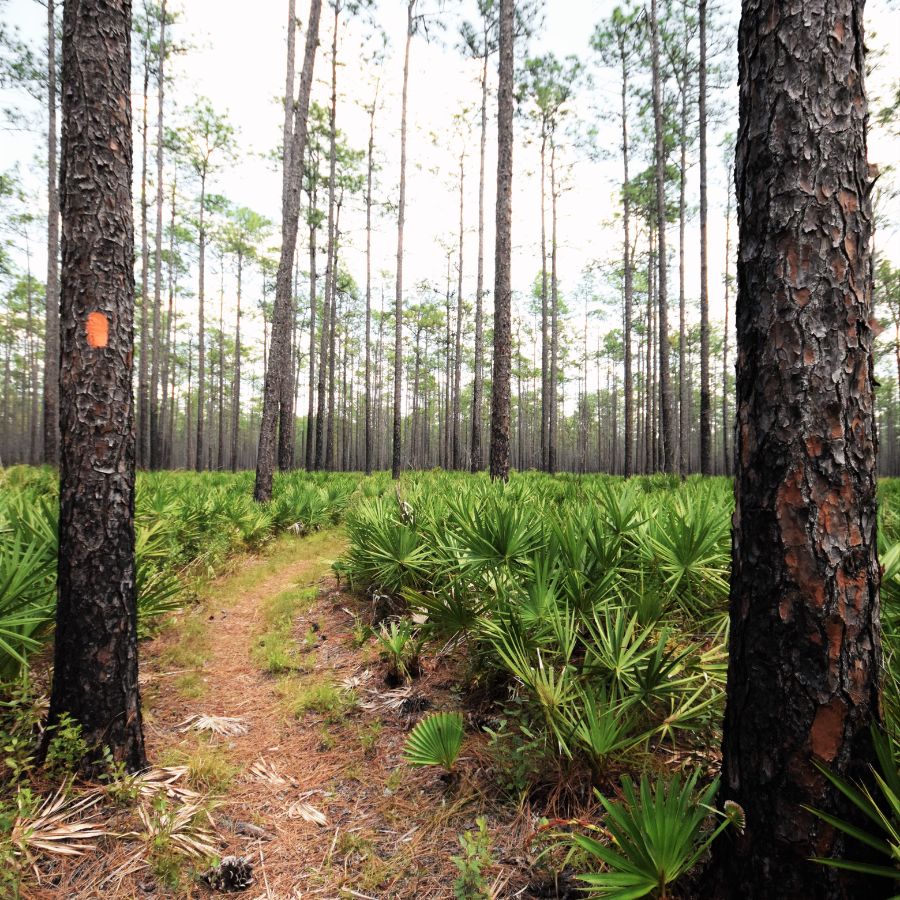
Osceola National Forest is home to the Big Gum Swamp Wilderness, one of Florida’s least-disturbed wetland ecosystems. Along the western edge of this wilderness, areas near Ocean Pond and the surrounding flatwoods support conditions that make chanterelles a familiar sight along certain trail segments and forest gaps nearby.
The historic Olustee Battlefield Trail isn’t just a Civil War site—it also cuts through some of the forest’s richest mixed hardwood habitat. As you walk the shaded trail under southern magnolias and laurel oaks, the ground along shallow depressions and drainage ditches is known to stay damp well into the summer.
Deep Creek, which flows through the southern portion of the forest, runs through miles of semi-flooded bottomland that’s lined with tupelo, sweetgum, and hickory. Along forest roads near the creek’s eastern corridor, the edges of the roadbed often support flushes of mushrooms in years with consistent rainfall.
Farther north, the forest around Seventeen Mile Hunt Camp includes longleaf pine stands interspersed with low hardwood pockets and seasonal wetlands. In the more secluded parts off Forest Road 278A, you’re more likely to find chanterelles under the canopy.
Blackwater River State Forest
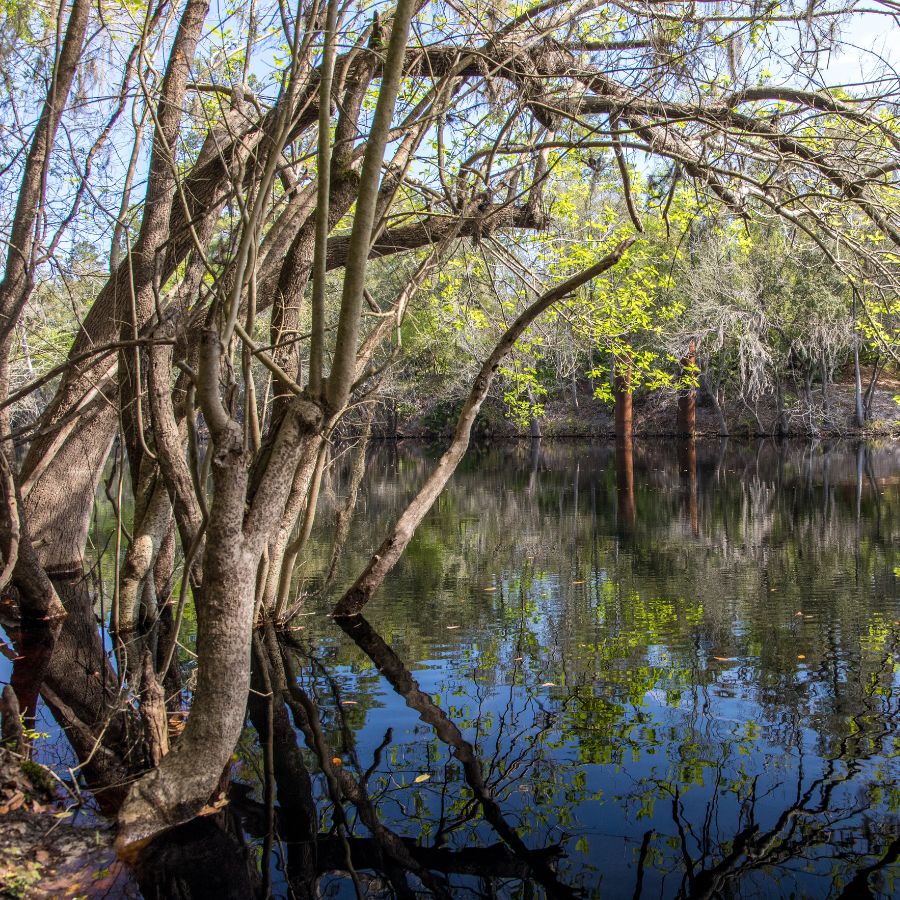
Blackwater River State Forest holds one of the purest sand-bottom rivers in the country, with water so clear it reflects the sky like glass. Around Juniper Creek Trail, especially in the shaded lowlands near Red Rock Bridge, the forest floor stays moist through the summer and supports a dense understory.
The Coldwater Creek area winds through a patchwork of pine flatwoods and steephead ravines that hold moisture longer than the uplands around them. If you walk the trails near the Coldwater Horse Trailhead, you’ll notice that conditions here are great for chanterelles to emerge.
South of Hurricane Lake, the hardwood hammocks along the shoreline and nearby floodplain host a wide variety of fungi during the wet months.
In the northern section near Beaver Creek Swamp, the land shifts from pine uplands into shady cypress-lined corridors that rarely dry out completely. The wooded areas around Forest Road 802 and the edges of the swamp basin are known for their deep leaf litter and seasonal humidity, both of which support reliable chanterelle habitat.
Withlacoochee State Forest
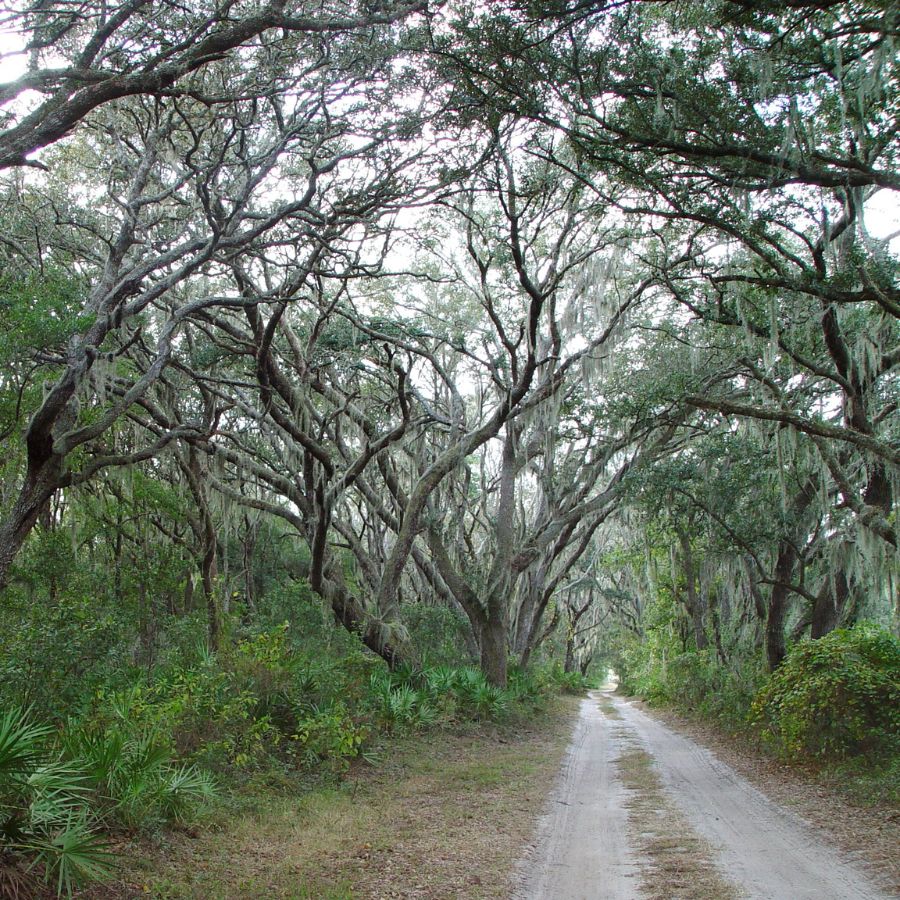
Withlacoochee State Forest spans over 150,000 acres and is divided into several distinct tracts, each with its own ecosystem. In the Citrus Tract, the area surrounding Holder Mine Campground is one of the places where chanterelles tend to grow during Florida’s wet season.
Along the Croom Tract, parts of the forest near Silver Lake and the Withlacoochee River floodplain hold a mix of bottomland hardwoods and moist soils. The footpaths around River Trail and Hammock Trail often pass through wooded depressions and old drainage channels where the right conditions come together.
In the Richloam Tract, the shaded forests near Mud Lake and the smaller ponds along Forest Road 43 are known for their seasonal dampness and dense canopy. Chanterelles can be found in the transition zones here, especially where the pine flatwoods meet low-lying hardwood pockets.
The Two Mile Prairie section near Nobleton, located in a less-developed part of the forest, includes a mix of upland ridges and wetland edges that stay humid well into summer. If you’re walking anywhere near the old logging roads or creek crossings, keep an eye on the shaded edges where chanterelles are known to appear.
Additional Locations to Find Chanterelles
Here are more parts of Florida where the right mix of trees, shade, and moisture tends to support chanterelle growth:
| Central Florida | Chanterelle Collection Details |
| Green Swamp Wilderness Preserve | Foraging allowed with prior approval |
| Hal Scott Regional Preserve | No commercial foraging allowed |
| Indian Lake State Forest | Permit required for foraging |
| Little Big Econ State Forest | Foraging allowed in non-sensitive zones |
| Ocala National Forest | Foraging for personal use only |
| Seminole Ranch Conservation Area | Foraging allowed with restrictions |
| Seminole State Forest | Foraging allowed with seasonal limits |
| Split Oak Forest Wildlife and Environmental Area | Foraging allowed with oversight |
| Withlacoochee State Forest | Foraging permitted in designated areas |
| North Central | Chanterelle Collection Details |
| Alachua County’s Barr Hammock Preserve | Limited foraging in designated areas |
| Austin Cary Forest | Educational foraging by approval only |
| Goethe State Forest | Permit required for foraging |
| North Florida | Chanterelle Collection Details |
| Osceola National Forest | Foraging allowed with restrictions |
| Suwannee River State Forest | Foraging for personal use only |
| Northeast Florida | Chanterelle Collection Details |
| Jennings State Forest | Foraging for personal use only |
| Panhandle | Chanterelle Collection Details |
| Apalachicola National Forest | Permit required for foraging |
| Bay County’s Conservation Park | Foraging for personal use only |
| Blackwater River State Forest | No commercial foraging allowed |
| Point Washington State Forest | Permit required for foraging |
| Tate’s Hell State Forest | Limited foraging with permission |
| South Central | Chanterelle Collection Details |
| Hickory Hammock Wildlife Management Area | Foraging allowed under WMA rules |
When You Can Find Chanterelles
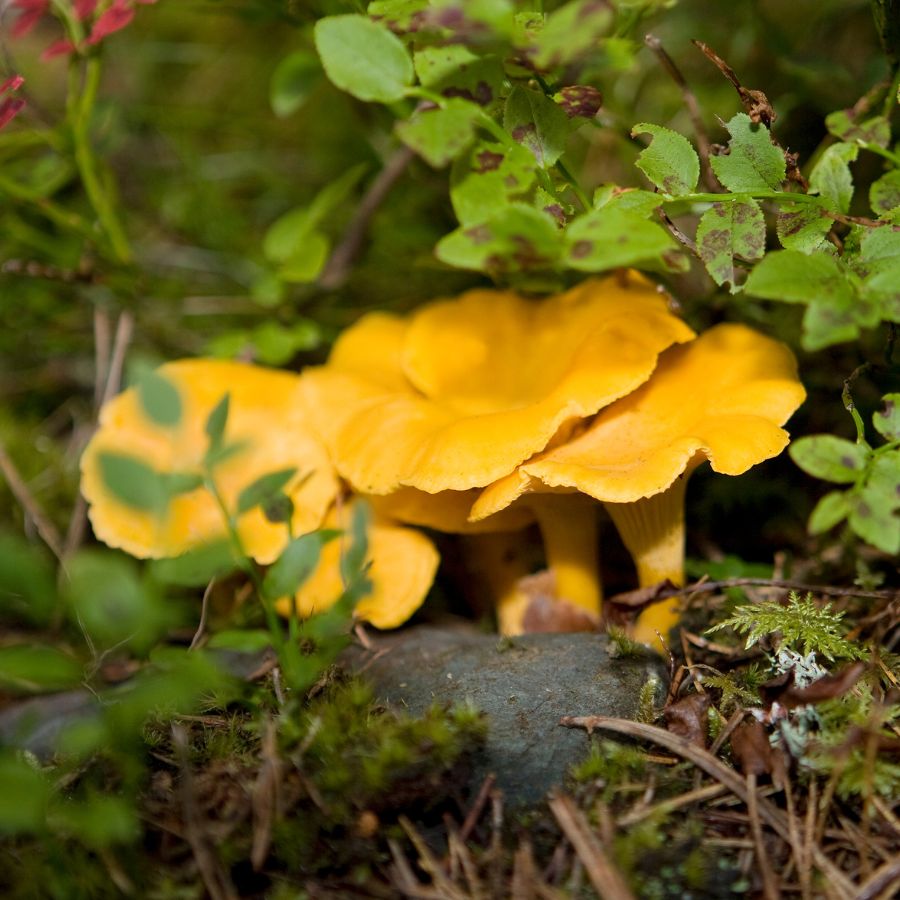
Chanterelles are one of the most prized wild mushrooms in North America, and knowing when to find them is just as important as knowing where they grow.
Their season depends heavily on rainfall, temperature, and the type of forest they grow in, which can vary across the United States. They often grow alongside other seasonal favorites like easy-to-identify wild fruits and berries, especially in wetter climates.
In the southeastern states, chanterelles often appear in early summer, especially after steady rains in May or June. They can continue fruiting through August or even into September in cooler, shaded areas. Southern Appalachian forests are known for producing long chanterelle seasons when the weather stays damp.
In the Midwest and Northeast, chanterelle season usually starts a little later. Most fruiting begins in late June or early July, following heavy summer storms. The season typically peaks in July and August, especially in mixed hardwood forests with plenty of leaf litter.
On the West Coast, the timing changes again. In California and the Pacific Northwest, chanterelles generally show up in the fall, especially after the first soaking rains of October or November. They can continue into January if the weather stays cool and wet.
Elevation also plays a role. In mountainous areas, you might find chanterelles at lower elevations early in the season, with higher elevation patches coming in a few weeks later. This can stretch the season out over several months if conditions are right.
The key is to track rainfall and watch local temperatures. Chanterelles thrive when the ground is moist but not soggy and the air is warm but not hot. If you pay attention to those patterns, you’ll start to notice the window when they reliably appear in your area.
While you’re planning your next outing, take a moment to read up on wild seeds, nuts, and berries that are easy to identify—they often grow in the same forest ecosystems.
One Final Disclaimer
The information provided in this article is for general informational and educational purposes only. Foraging for wild plants and mushrooms involves inherent risks. Some wild plants and mushrooms are toxic and can be easily mistaken for edible varieties.
Before ingesting anything, it should be identified with 100% certainty as edible by someone qualified and experienced in mushroom and plant identification, such as a professional mycologist or an expert forager. Misidentification can lead to serious illness or death.
All mushrooms and plants have the potential to cause severe adverse reactions in certain individuals, even death. If you are consuming foraged items, it is crucial to cook them thoroughly and properly and only eat a small portion to test for personal tolerance. Some people may have allergies or sensitivities to specific mushrooms and plants, even if they are considered safe for others.
Foraged items should always be fully cooked with proper instructions to ensure they are safe to eat. Many wild mushrooms and plants contain toxins and compounds that can be harmful if ingested.

